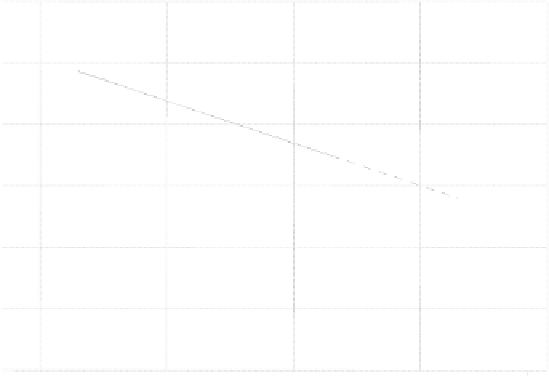Geoscience Reference
In-Depth Information
The NC domain for these sands is limited: indeed, at around 2 to 3 MPa, we
observe grain crushing. The
in situ
sands (
e
< 0.8 or
I
d
>0.3) are “overconsolidated”
(see Figure 5.8, the paths with a slight slope before 2 MPa) and we will
never
find
the NC line again, since it is on this side of 2 to 3 MPa, except for sands with very
hard grains such as Sacramento sand [LEE 67]. Consequently, we can speak about a
fictive consolidation stress p'
ic
on the extension of the NC line (ISL (See Figure
5.18)) without grain crushing. In this way, for very loosely arranged sands, we again
find the same loading NC and unloading-reloading OC, as for clays.
1.4
Oedometric paths without
rupture
of
grains
N.C Cc = 0.14
e
1.2
1.0
e
with rupture
0.8
0.6
Hostun : AL Aissa (1973)
Kolmayer (1970)
LeLong (1968)
Ziani (1986)
0.4
0.2
0.01
0.1
1
10
100
p'
(MPa)
p'
ic
Fayad-Saim-liv-5111
Figure 5.8.
Oedometric tests on laboratory sand [FAY 00]
5.4.2.
Normally consolidated state (ISL)
Biarez observed that Roscoe's model [5.15] [ROS 58] represented normally
consolidated soils, drained as well as undrained, rather well [DAS 97]:
2
p
'
q
ee C
−−
=
log(
)
−
Cd
log 1
+
[5.15]
0
p
M p
0
Parameter
C
d
is easily observed on
p'
constant paths. Hence, for sands as well as
for clays, Biarez observed that the
C
d
is around 0.3 with a gap between the isotropic

































































































Search WWH ::

Custom Search